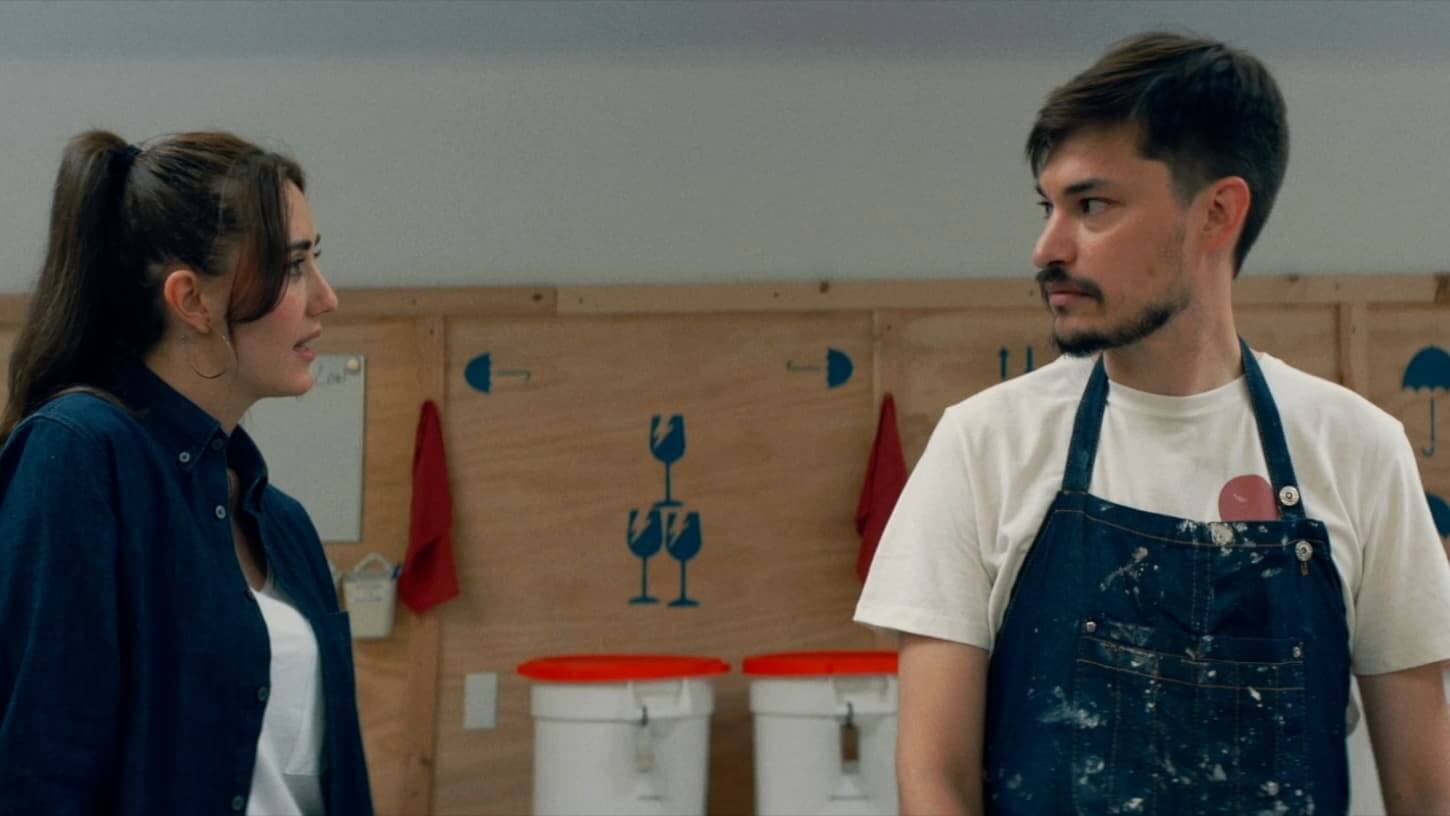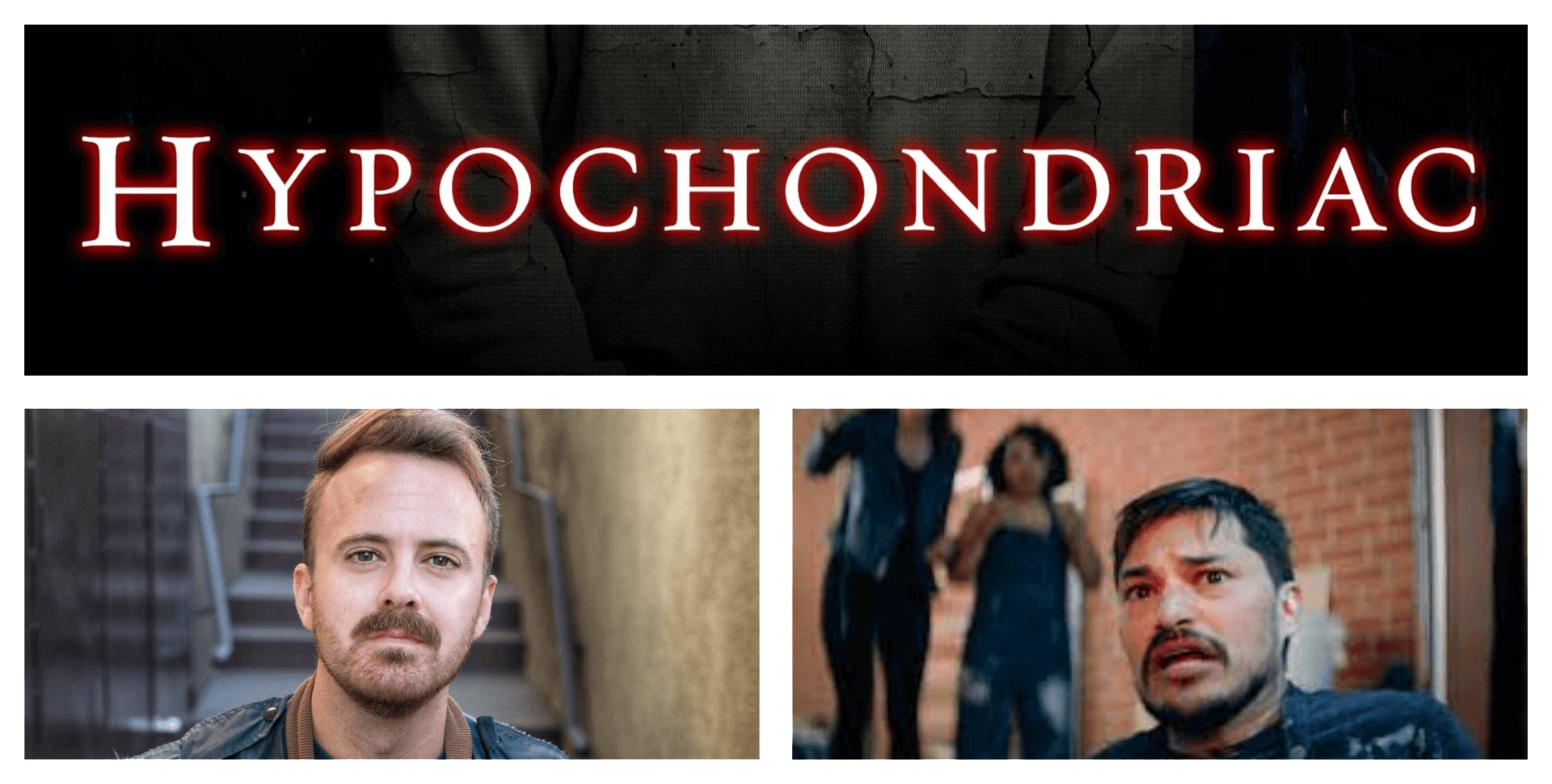Hypochondriac is a horror/drama/thriller film that follows Will (Zach Villa), a young potter whose mentally ill mother reemerges after a 10-year absence. Haunted by the manifestation of his childhood trauma, Will descends into a dark spiral of madness.
The following interview is with the filmmaker of Hypochondriac, Addison Heimann, who wrote and directed the film which now showing in select theaters starting July 29 and is now available to watch via digital.
Hypochondriac states that it's 'based on a real breakdown" — can you elaborate on this?
Oh yeah for sure! So basically after an injury at my work, I developed a repetitive strain injury so bad that I could text, I could eat food with a fork, I couldn’t even shave. It sucked! Then I visited Dr. Google, and he told me I was dying of ALS. While this was happening, my mother was leaving me voicemails telling me not to trust my friends. This confluence of events caused me to crack. Through that experience, I wrote a script that is an emotional retelling of those events. Not quite true, but not quite untrue.
Can you tell us a bit about your decision to make Hypochondriac the title?
It’s a bit of a bait-and-switch isn’t it? Ultimately why I settled on the title was because the entire time Will (my cipher, played excellently and honestly by Zach Villa) is trying to solve the physical manifestation of his trauma — which for me (and Will) exhibited as symptoms closely aligned with ALS and MS. Through the entire film, he’s trying to solve his symptoms (dizziness, brain fog, arm tingling, loss of sensation) rather than actively accept and deal with the trauma of his mother. This happened to me in real life and it made sense to explore it through that lens in the film.
The film bravely explores the subject matter of mental illness, familial abuse, and childhood trauma. How did you find the screenwriting process from start to finish?
Well, it wasn’t easy that’s for sure. I had to get over the tried and true saying in our industry that “just because it happened doesn’t make it interesting.” The first draft was a vomit draft on what happened exactly. I think, if I remember correctly, he got hit by a car at the end for no particular reason. It was bad. But that’s okay. You can fix bad, you can’t fix nothing. One of my best friends helped me develop it first, basically being my hands writing the note cards of an outline that was much better than the original draft. Ultimately in the beginning though, I was really avoiding talking about what is the central theme in the movie now: the trauma with my mother. I have been kind of trying to write about it my entire adult life, but I couldn’t figure a way in that felt honest. But once the wolf came into play and I saw I could play with reality/insanity, I found it much easier to form the script. Once I met my producers at the Cucalorus Film Festival, they were able to help me put the finishing touches on my script, and then we went into pre-production.
Throughout the film, the wolf costumed entity shows up whenever Will’s mother contacts him and tells him “I’m stuck”. The ending shot has Will comfortably sitting next to the wolf-costumed entity on one side, with Luke on the other. Can you tell us more about the ending, and what the wolf costumed entity represents/signifies?
It’s the physical representation of his childhood trauma. I liked the idea of a man in a wolf costume (obviously homaging Donnie Darko, one of my favs movies) because it could metaphorically play with the domestic/savage nature of an animal while also talk about the Jekyll and Hyde concept of mental illness. Every time you see the wolf, Will ignores it, runs away from it, and ends up getting hurt more. The wolf is not a villain: he’s just his psyche played back at him. So when he ignores his trauma with his mother, the wolf gets scarier, more adult, and more violent. And ultimately in the end, when Will finally accepts he needs help, he realizes that he’s able to live with the wolf. Signifying basically that mental health never disappears, but with hard work and determination (and a healthy dose of good friends/partners), you can live with it.
What were the influences for the visuals of Hypochondriac — what was it like working with the Cinematographer Dustin Supencheck?
Dustin is a gem. Everyone should work with him. One of the best upcoming DPs of our time. We took a lot from several movies. Donnie Darko, Creep, Daniel Isn’t Real, Suspiria, Black Swan, Midsommar, and Take Shelter to name a few. I loved the slow zooms of Giallo films and the cross-fades of the 90s/early 2000s genre and so we built our camera look based on that. Constantly switching between our Kowa Anamorphics, our zoom lens, and a lens baby (used to create blurriness), we developed a vocabulary to create the visuals of what it felt like for me to crack. He had the best ideas, and it was so collaborative, but ultimately, he’s the visual star. We had a little trick on set: if we were running out of time, I would ask Dustin to go handheld to capture a particularly emotional scene, and it was incredible to watch him create magic. He goes into a trance and when we watched the playback the whole team went “woah.”

What are your favorite scenes in Hypochondriac — during filming and the final cut?
I think my two favorite scenes are the break-up scene at the midpoint and the hot tub scene. The break-up scene because it was ultimately my favorite acting moment between Zach and Devon Graye (our Luke). I remember that day because we were shooting at my house and the A/C broke which means it was incredibly hot because we had blacked out the house during the day and couldn’t open any windows. We were running out of time and planned on doing coverage, but after we did the first take, Dustin and I looked at each other and went, nope, this is the coverage. It’s one take. It was beautiful.
For the hot tub scene, it’s because of the building of tension and horror. It’s probably the scariest moment in the film and also I love watching the audience react to it. There’s gore, there’s tension, and jump scares. It took half a day and had a lot of moving parts. The team really put their all into it and I’m really proud of what we ended up with.
Can you tell us about working on the score with Composer Robert Allaire?
Bob’s great. He was able to take my non-music educated suggestions and spin gold. We talked through the film and he created “themes.” We had a Luke theme, a Mom theme, and a dizziness theme that we used throughout the movie to create tension. Even in scenes of what is supposed to be pure joy, Bob had a way of introducing this uneasiness in the score that both foreshadowed scenes further in the film, and add an extra layer of dread. The best part was having him in the sound mix after we had been staring at this thing for three days and he came and made all his score build in the best way. That to me puts our sound over the top and makes watching it in a theater a delight.
How did you find the post-production process with Editor Mike Hugo?
Mike’s great (are you sensing a trend here?). We both are of the same mind, and when we got into the thick of editing, we worked really quickly. He gave me a two-hour and twenty-minute assembly cut and the first thing I told him was: okay this is a ninety-minute movie. I know it doesn’t look like it, but let’s get it down to that and see what we missed. And we did and turns out, we didn’t miss a lot. After each test screening, we would go back and tweak and tweak, and edit, and sometimes bang our heads against the wall until both of us were like “you know what? I think this is a good movie.” I also particularly enjoyed staying at his house for a bit in Atlanta and bonding with his cat Professor.
Where was the movie filmed, and how long was principal photography?
We filmed in several places all across Los Angeles (Eleven places to be exact, I know I’m an idiot). We shot for twenty days which meant we weren’t at a location (except for one) for more than three days. Sometimes it was only one. But we had an incredible crew who really understood what I was going for and we worked quickly and efficiently.
What are the films/directors that have influenced you as a filmmaker, including Hypochondriac?
Oh man, so many. I love John Carpenter, Jennifer Kent, Prano Bailey Bond, the Cronenbergs (both father and son), and Wes Craven. There are so many more but The Thing, The Babadook, Censor, Possessor, and honestly everything in Wes Craven’s catalog were huge influences.
Favorite movies from the past decade?
Ooooh, love this question. I would say Censor, Sissy, Dual, Huesera, Something in the Dirt, The Cow Who Sang a Song Into the Future, The Harbinger, The Artifice Girl, and Swallowed. These are all movies from this current festival cycle and honestly really impress me. They all make me go “damn, that was an incredible movie, I’m jealous, but also in awe.” Prano Bailey-Bond, Kane Senes and Hannah Barlowe, Riley Stearns, Michelle Garza Cervera, Justin Benson, Aaron Morehead, Francisca Algeria, Andy Mitton, Franklin Ritch, and Carter Smith are at the top of their game and I’m proud to call them peers and friends.
Which themes and subject matters interest you as a filmmaker?
I want to tell queer genre stories dealing with mental health.
Watch Hypochondriac Now
